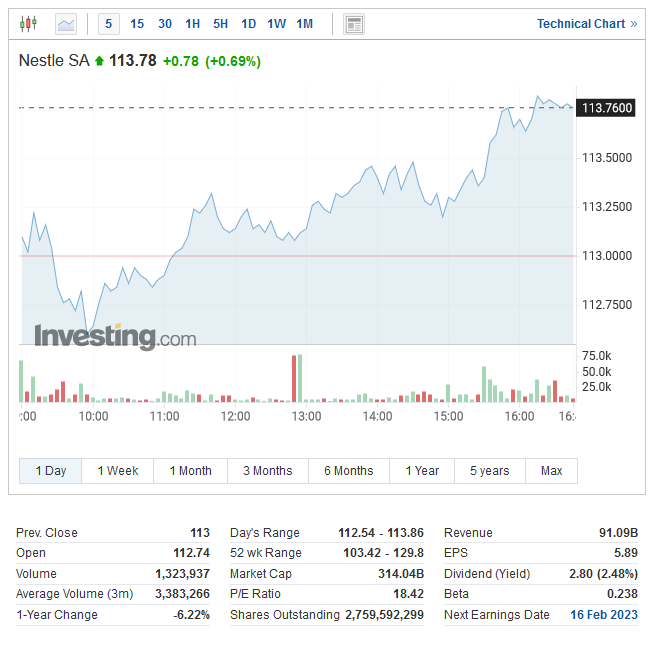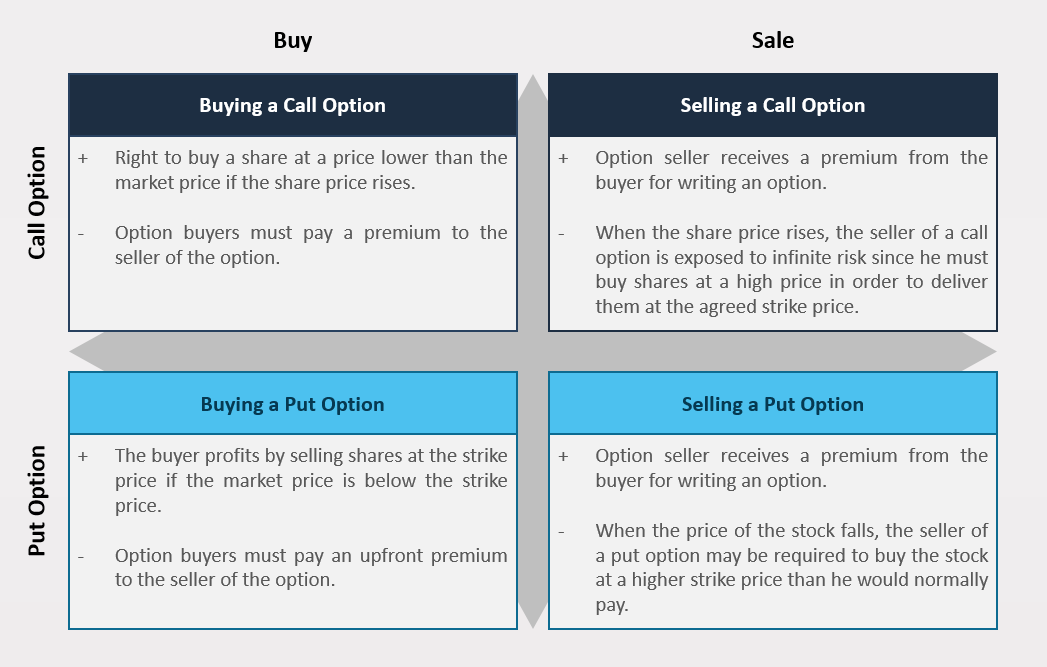Options
Would you like to invest your money? Get in touch with an expert:
What are Options?
An option gives the buyer the right to buy or sell an underlying asset (for example, a share) at a predetermined price, at a specified time, or within a specified period. There is no obligation associated with an option. Consequently, the buyer of the option is free to decide whether or not to exercise it. Options may be subject to a variety of conditions. There are many different option strategies based on call options and put options. Hedging, generating income, or even speculation can be the goal of an option. There is an expiration date associated with each option contract.
Options Trading Terminology
An option contract involves a buyer (also known as a holder) and a seller (also known as a writer). There is a premium associated with each option. The option buyer must pay this fee to the option seller. The strike price is also included in an option contract. Basically, this is the price at which the underlying asset (e.g., the stock) can be bought or sold. Moreover, option contracts have an expiration date. It is only possible to exercise the option until this date. Exercise can take a variety of forms. For example, European options can only be exercised at expiration. It is possible to exercise the American option on any trading day before its expiration date. Bermuda options may be exercised at various predetermined dates. If the market price of the stock is above (in the case of a call option), or below (in the case of a put option) the strike price, the option is in-the-money. By exercising the option, the buyer receives a better price than on the open market. An option is out-of-the-money if the market price is below the strike price (call option), or above the strike price (put option). In this case, the buyer does not exercise the option and loses the premium. An option is at-the-money if the market price is equal to the strike price.
The buyer of a call option may buy an asset at a specific price (strike price) within a specified time frame, or at a specific point in time. Buyers are only exposed to the risk of the premium they have paid.
A call option buyer anticipates that the share price will rise above the strike price before the option expires. In such a scenario, the buyer may exercise the option, buy the stock at the strike price, and immediately sell it for a profit at the current market price. An option becomes worthless if the price of the stock does not rise above the strike price by its expiration date. In this case, the buyer of the option is not obligated to buy the shares, but loses the premium paid for the call option.
A contract is concluded when a call option is sold. The seller receives the premium. The maximum profit is determined by the premium received when the option is sold. A call option seller is pessimistic and believes that the stock price will fall during the term of the call option, or remain fairly close to the strike price.
In the event that the current share price is at or below the strike price at the time of expiration, the call option is worthless for the call option buyer. In contrast, the call option seller retains the premium as a profit. In this case, the call option is not exercised since the buyer would not buy the stock at a strike price that exceeds or equals the current market price. If, however, the market price of the stock is higher than the strike price at the time the call option expires, then the seller of the call option must sell the shares at the lower strike price to the buyer of the call option. Therefore, the seller's risk is greater than the buyer's risk.
Put Option
Put options enable the buyer to sell an asset at a defined price (strike price) within a specified period of time, or at a specific point in time. In this case, the buyer's risk is limited to the amount of the premium.
An investor who buys a put option expects the market price of the underlying stock to fall below the strike price before or on the expiration date of the option. Put options are profitable if the market price of the stock associated with the option is less than the strike price at maturity since the buyers of put options expect the stock price to decline. The buyer of the put option may exercise the option if the current market price is below the strike price at the time of maturity. The shares are sold at the higher strike price of the put option. Alternatively, he may repurchase the shares on the open market at a lower price if he wishes to replace his holdings. In this case, the difference between the higher strike price and the lower market price is the profit of the buyer of the put option, minus the premium he paid for the put option. As a result, if the market price of the stock linked to the put option declines, the value of the put option increases. If the put option expires worthless, the risk of purchasing the option is limited to the loss of the premium.
A put option seller assumes that the market price of the share linked to the option will remain the same or increase during the term of the option. The put option expires worthless if the share price at the expiration date is greater than the strike price. Typically, a put option is not exercised since a higher market price would prevent the option buyer from selling the stock at the lower strike price. The put option seller is obligated to purchase shares of the stock associated with the put option at the strike price if the stock market value falls below the strike price of the put option. Therefore, the put option is exercised by the buyer who sells his shares at the strike price if it is higher than the market value.
The risk for the seller of the put option is if the market price falls below the strike price. The seller is forced to buy the shares at maturity at the strike price. Based on the amount by which the shares lose value, the seller's loss can be very high. The premium reduces the loss to some extent.
In general, there are three main reasons to buy an option:
- Hedging: To limit the risk by ensuring, for example, with a put option, that in the event of a fall in price, the shares can still be sold at a higher price (strike price).
- Gaining Time: The purchase of a call option, for example, gives the investor, in the event of uncertainty regarding the purchase of a share, the opportunity to decide later whether the trade was the right decision. In other words, you are buying yourself time in this case. Losses are limited to the option premium if the stock is not bought.
- Speculations: It is also possible to speculate on price movements with options.
Thus, traders and investors buy and sell options for different reasons. Their terminology and functionality are described in detail below.
Example Call Option and Put Option
Let us assume that you have bought a call option that entitles you to purchase Nestlé shares at a price of CHF 110 on today's date. In the figure below, you can see today's daily price of Nestlé shares. Since the Nestlé share is trading at a higher price than CHF 110 today, you would exercise the call option since you can buy the share cheaper than it is currently trading on the market. Assuming the share is sold directly back on the market, you will make approximately CHF 3.76 per share (approximately CHF 113.76 minus CHF 110 (for net profit the option premium must be deducted as well)).
Consider the following scenario: You bought a put option that allows you to sell Nestlé shares for CHF 110 on today's date, and the chart shows today's daily Nestlé share price (CHF 113.76). In this situation, you would not exercise the put option since you could sell the shares on the market for a higher price. Nestlé's share price was expected to fall below CHF 110, but instead, it rose above it. A put option in this situation results in a loss of premium.
Daily Nestlé Share Price, November 28th, 2022
Source: www.uk.investing.com
Using options for gaining leverage and hedging risks can be very beneficial. There are several disadvantages associated with option contracts, including their complexity and difficulty in pricing. As a result, they are considered to be an advanced form of investment that should only be used by experienced professional investors. The popularity of these products has increased in recent years among retail investors. Considering that options have the potential to generate above-average returns or losses, investors should be aware of the possible implications before taking positions involving options. You can receive the best possible support when trading options with the help of a good and experienced wealth manager.
Would you like to invest your money?
Speak to an expert.
Your first appointment is free of charge.





